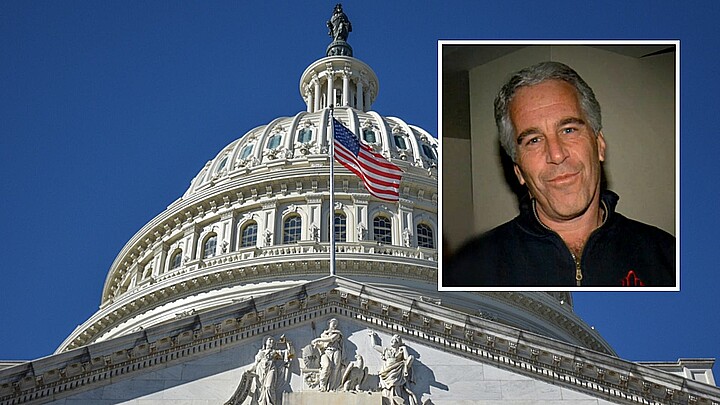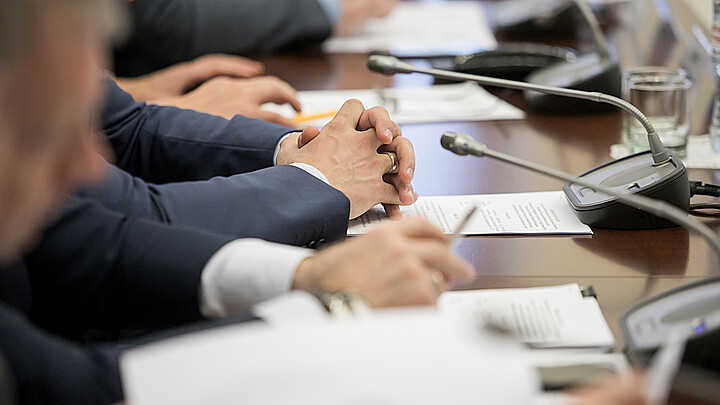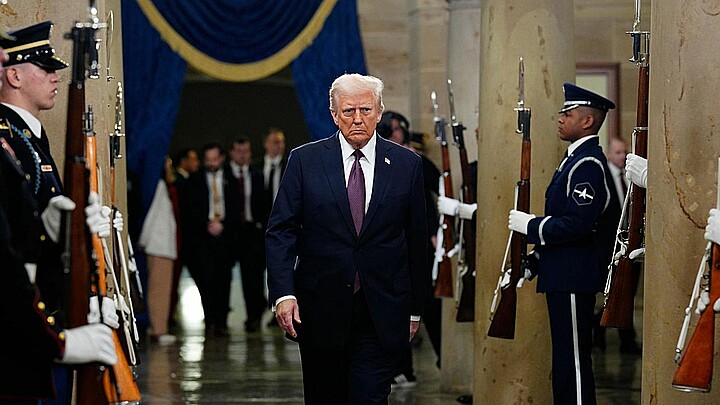Politics
U.S. Election Day: Harris and Trump tied in polls and with close numbers in key battleground states
America’s presidential candidates remain virtually tied in the polls on election day

November 4, 2024 2:24pm
Updated: November 5, 2024 9:05am
Presidential candidates Kamala Harris and Donald Trump remain virtually tied in the polls on election day. According to political analysts and specialized websites, such as RealClearPolitics, the position in the White House will be defined in seven disputed states, where all eyes will be on this Nov. 5.
Vice President Harris leads the national popular vote with 48% over the Republican magnate, who has 46.9%, according to the survey aggregator FiveThirtyEight, which puts the Democrat 1.1 points above Trump.
Harris’s popularity has slightly decreased during the past month while Trump has managed to increase his base by a very small margin.
Still, this figure only represents the popular vote, which ultimately will not be decisive since the U.S. presidential election is decided indirectly through the Electoral College, which has 538 delegates. This system allows a candidate to win the presidency even if they lose the popular vote.
Each of the 50 American states sends a specific number of delegates based on their population. Although most of the states have a clear voting trend, there are seven states considered ‘swing states’ or ‘battleground states,’ which could lean either way for the candidates: Arizona, Georgia, Michigan, Nevada, North Carolina, Pennsylvania and Wisconsin.
Although Arizona and Georgia and are usually Republican states, they turned Democratic for President Biden in 2020, and some pollsters predict there is a slight chance North Carolina could also turn Democratic this year.
On the other side of the spectrum, midwestern states such as Michigan, Pennsylvania and Wisconsin usually make up what pollsters call the infamous ‘Blue Wall’ since television news networks assign the color blue to states that vote Democratic. Trump won those states in 2016 and there is some suspicion he may win them again.
If Trump wins Arizona and Georgia and maintains all the other states he won in 2020, he will only have to win one Blue Wall state this year to reach 270 electoral votes, which is the threshold for victory.
The seven battleground states are where both Harris and Trump’s campaigns have concentrated their advertising and where both candidates have dedicated most of their time, which was been reflected in their schedules this last week.
Harris spent Monday in Pennsylvania, the state she most needs to win, with rallies in three of its strongest cities: Scranton, Allentown and Pittsburgh, and then moved on to Philadelphia, where she was accompanied by artists such as Lady Gaga, Kate Perry and Ricky Martin.
Meanwhile, Trump toured North Carolina, with a rally in Raleigh with stops in Pennsylvania steel manufacturing towns such as Reading and Pittsburgh. It was announced that the Republican round will end in Grand Rapids, Michigan.
According to polls and surveys aggregated in recent days, and replicated by several North American media, the Democrat surpasses the Republican only in the states of Wisconsin (which sends 10 delegates to the Electoral College) and Michigan (15 delegates) by just one tenth in both: 48 .3% for Harris to 47.3% in Wisconsin, and 48% to 47% for Trump in Michigan.
For his part, the former Republican president has the advantage in North Carolina (which sends 16 delegates), Georgia (another 16 delegates) and Arizona (11 delegates), also with a very short distance of between one and two points.
Thus, the polls give Trump 48.3% compared to 47.3% for Harris in North Carolina; 48.4% vs. 47.2% in Georgia; and 48.9% compared to 46.6% in Arizona, the state with the largest margin of victory for the former president.
Pennsylvania, the state with the most delegates (19), and Nevada (6 delegates), are the two biggest unknowns, since both candidates are tied with less than half a point of margin.
However, while a few months ago the advantage in these two territories was with Harris, now the balanceseems to lean, within the margins of error, on Trump, who takes 47.9% compared to 47.8% in Pennsylvania and 47.8% versus 47.4% in Nevada. The margin, however, basically leaves them tied, the polls say.










